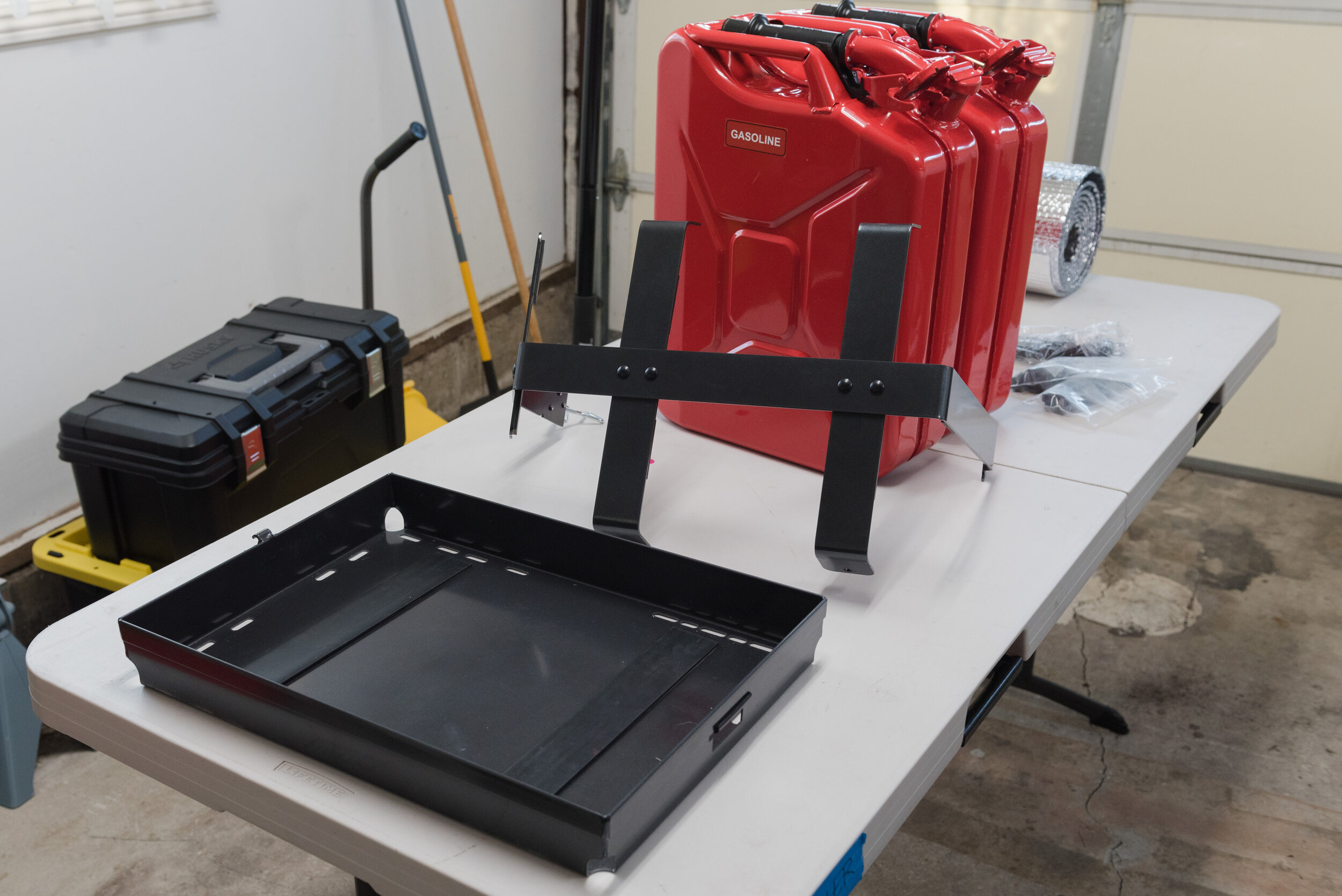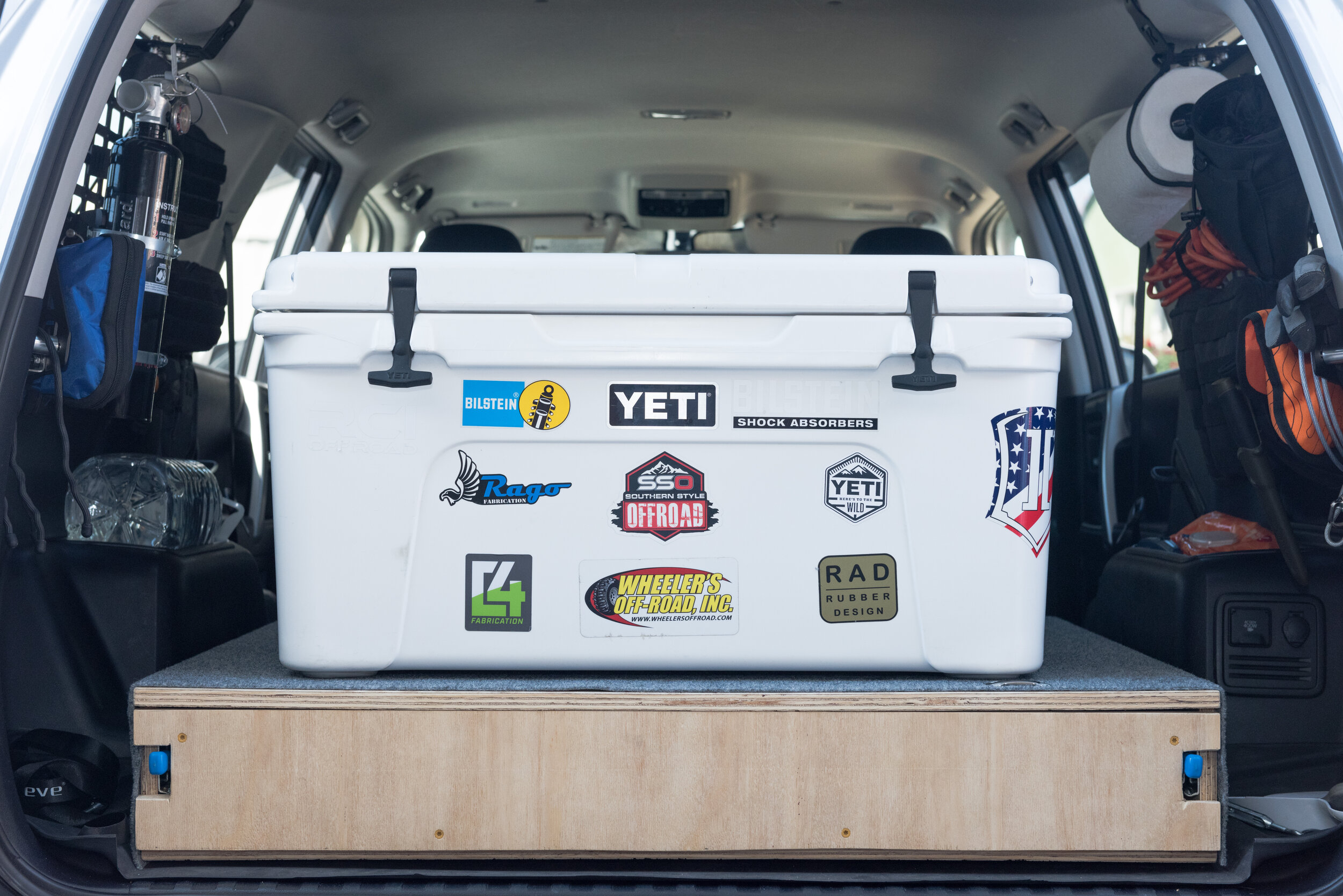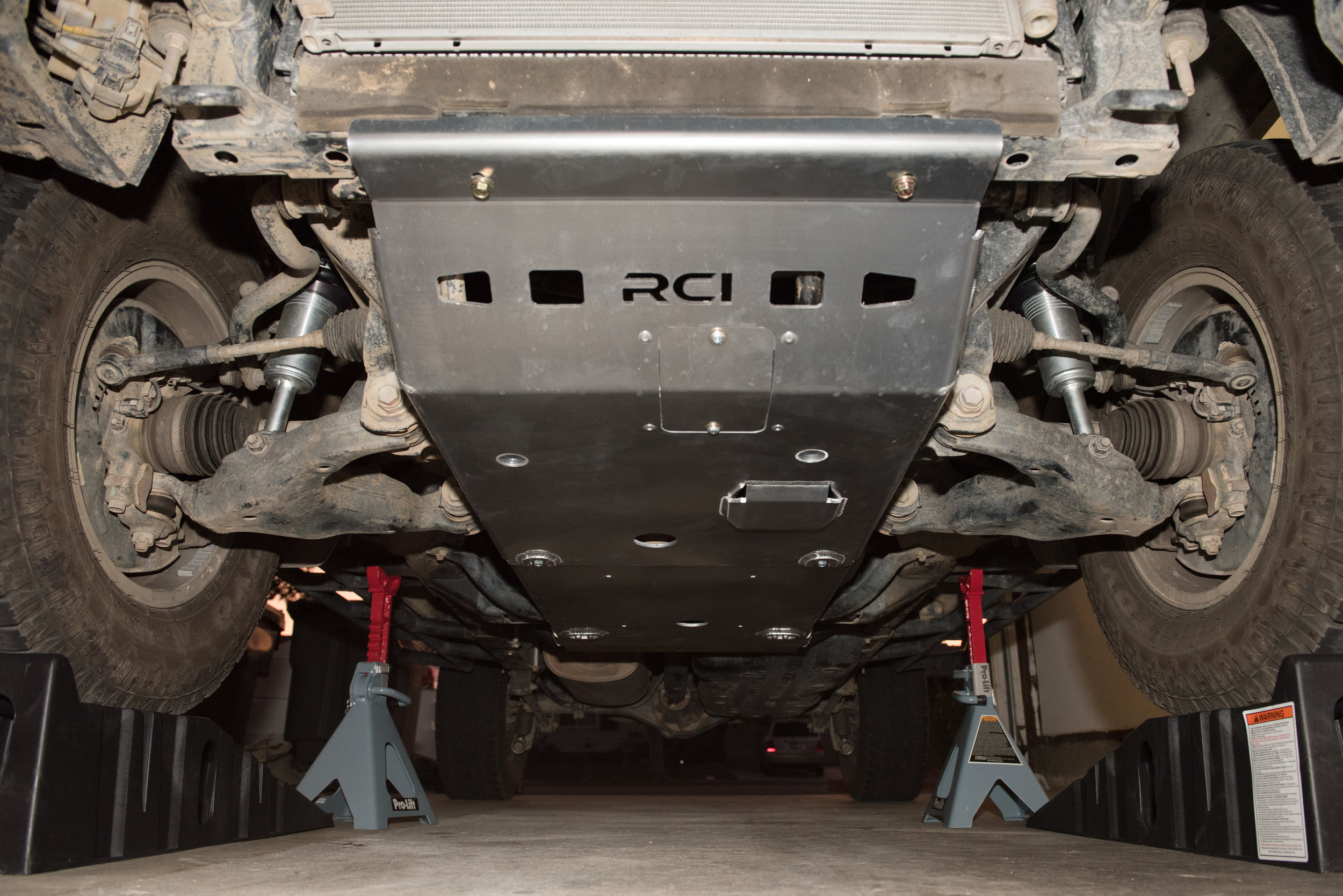I’ve been itching to upgrade the 4Runner’s exterior lighting system for quite a while. After all, I had “accidentally” ordered a wind fairing with light bar cut out for the Southern Style Offroad Roof Rack, which also features nifty cutouts for flush-mounted scene lights along its sides. Since I had “planned” on those upgrades, I figured… why not go all out? Buy once, cry once! Hahahaha… ha… ha. After some thought, I settled on installing a 40” light bar, ditch lights, scene lighting, and amber chase/reverse lights. Those upgrades will be detailed in another post
The hardest question was not “Which lights should I install?”, but rather “How should the lights be controlled?’… Most folks might only add one or two lighting circuits to their vehicle and opt to control each with a switch-controlled relay integrated with a wiring harness. However, increasing the number of lighting components increases the number of wires and relays in the engine bay, and the number of relay wires that need to be pulled through the firewall. That’s not exactly feasible for the six separate lighting circuits I planned on installing. There’s nothing good about wire rat nests!
These were my minimum requirements for a lighting controller:
Clean installation - no rat’s nest of wires in the engine bay.
Output dimming - wanted to dim scene lighting (under awning) for when we are out camping.
At least 8 controlled outputs for planned lighting add-ons, and further expansion:
Grille lights
Light bar
Ditch lights
Left scene lighting
Right scene lighting
Chase lights
On-board air compressor (TBD, if I ever get around to it)
TBD
Water/dust proof control unit
The two main lighting controllers I looked at were the Switch Pro SP-9100 and sPOD. Though, to be honest, I didn’t do much research into sPOD’s system as their 8-circuit system was almost $200 more than Switch Pros unit, which is an 8-circuit by default. However, the sPOD system may be more suitable for those who can take advantage of daisy-chaining multiple sPOD units to control up to 32 different circuits (4 controllers total), which are all rate at 30A outputs. In comparison, the Switch Pro only has four 30A and four 25A outputs without a daisy chain option, which is more than enough for my perceived uses. Also, the Switch Pro unit can be controlled via BlueTooth!
The Switch Pros SP-9100 kit came neatly packaged with:
One power module (to be mounted in engine bay)
One switch panel (to be mounted in vehicle)
Color-coded output wiring
11’ communication cable between switch panel and power module
Power cable with 125A in-line fuse
Various wire looms, zip ties, heat shrink crimp-on o-rings, switch panel mounting hardware
Random aluminum plate I could not find a use for… hmm.
Outside of the lighting controller, I also wanted a system that would allow me to run constant power to the trunk (for future 12V fridge/freezer and charging electronics overnight). To do this, I knew I needed to add a fuse block to protect future circuits and maintain neat wiring. Additionally, I needed a way to mount the Switch Pro power module in the engine bay. There are a few companies that manufacture specialized mounts for the Switch Pro, and I chose to purchase a Vertical Mount from PowerTrays along with their accessory bundle pieced specifically for the mount and Switch Pro SP-9100.
The neat feature of the PowerTray system is that you’re able to mount the power module vertically, which meets Switch Pro’s warranty requirement! The PowerTray accessories included necessary mounting hardware, extra heatshrink ring terminals, a 6-circuit fuse block, 8-circuit terminal block, a 10-terminal grounding bus bar, a dual MRBF terminal fuse holder with 100A and 125A MRBF fuses, and two positive and one negative 4AWG battery cables.
The following shows the PowerTray assembled with the fuse block, terminal block, and terminal grounding bus bar. There is also a 100A resettable breaker shown, which I ordered separately and did not end up using for this build.
After piecing together the PowerTray, I mounted the Switch Pro power module using the bolts lock washers, and nuts provided in the PowerTray accessory kit. After mounting the Switch Pro power module, I tidied up all the cabling by cutting all wires to length, crimping and heat shrinking ring terminals, and securing each wire to the terminal block. Note that these wires are the powered outputs from the Switch Pro unit. Outputs 1 through 4 are 20A single-wire outputs and Outputs 5 through 8 are 17A dual-wire outputs (for a total of 35A out). Both wires for outputs 5-8 must share the same ring terminal. Four wires (white - lights trigger; light blue - ignition signal trigger; black - ground; and pink - external input trigger) should be left full length as they will be used later during vehicle installation.
Afterwards, it was time to mount the PowerTray and Switch Pro power module to the engine bay! The system mounts just behind the engine bay fuse block, in front of the power steering reservoir. I chose to mount the PowerTray as close to the engine bay fuse block as possible to maximize access to the firewall grommet through which I’d need to pass the control cable through.
The PowerTray is held in place by two bolts that bolt directly into two factory tapped holes in the engine bay wall and one support arm that attaches through the fender. Pro-tip: Read directions and install support arm onto PowerTray BEFORE mounting unit to engine bay wall. Using a universal head with 10” extension is almost mandatory to get all these nuts and bolts in tight.
After the unit was mounted in the engine bay, I decided to strip the power module’s ground wire to length and ground to the ground bus bar. The Switch Pro instructions say to connect the ground wire to a ground stud on the vehicle frame or to the negative terminal of the battery - the bus bar is close enough to ground.
Next, pass the three remaining control wires (white, pink, light blue) through the firewall grommet into the passenger cabin. After passing the two control wires, pass the Switch Pro communication cable through the firewall grommet. There are two ends to the communication - one which is of smaller diameter than the other… Pull the smaller diameter end from the cabin out through the firewall grommet using a fish wire (or in my case, a wire clothes hangar). The communication cable head is thick and I found it easiest to puncture an “x” in the firewall grommet using a 1/2” wood chisel. I don’t plan on going through any water crossings… but definitely should seal that up eventually! Be careful to not cut any other wires protruding through the firewall grommet.
Use two add-a-fuses with 5A fuses to tap the white wire to the tail light slot (bottom-most fuse on left-most column) and the blue wire to a blank “ignition-on” slot (5th fuse slot down on the right-most column). Since I did not need the pink wire for an external input, Coil excess wiring and secure using zip ties..
I chose to mount the Switch Pro switch panel on the bezel with the window adjustment doo-hickey and dash light control. First, cut out the mounting template provided by Switch Pro in their paper instructions. Take the switch panel and figure out where you want to mount it. Then, tape the mounting template in place. I used electrical tape because blue tape/masking tape wasn’t sticking to the plastic. Next, use a plastic pry tool to pop the bezel out of place.
Drill out holes in template using appropriate sized drill bits. Drill pilot hoels before using larger drill bits. It is also easy to pop out the mirror and lighting control doo-hickeys to prevent unnecessary damage.
Once the mounting holes are drilled, mount the switch panel using the provided studs and lock nuts. Do not over-tighten, as this will warp the plastic bezel and make it difficult to fit back into place. Re-install the plastic bezel into the dash and connect/tidy up the communication cable.
Lastly, connect the ground bus bar to the negative battery terminal, then the fuse block and Switch Pro power module to the positive terminal. All done!
Overall, I am very happy with the Switch Pros SP-9100 lighting controller. It does what I want it to do and has a very clean interface in the cabin. Here are a few things I’ve learned since purchasing and installing that may be helpful to you:
Any output can be dimmed, but output dimming must be enabled through the Bluetooth app. Outputs can only operate at 100%, 50%, 25%, and 10% outputs. Dimming memory is held until the system is powered off (i.e. vehicle shuts off).
Any output can be preset to turn on when the system is powered on - I’ve set it so the grille lights turn on when the ignition is on.
The factory preset switch panel brightness was too bright, so I dimmed it via the app and changed the background to a dark purple. At night, there is still a faint reflection on the driver’s side window from the switch panel but it is much less than before.
The Bluetooth app is fairly clunky. It needs to load every screen after every tap, which makes it not flow very well. There have been times when the Bluetooth connection drops in the middle of a change.
Every SP-9100 controller comes preset with a Bluetooth password from the factory. It is necessary for you to change this password to connect via Bluetooth, otherwise anyone with the app could control your system and even lock you out by changing the password!




























